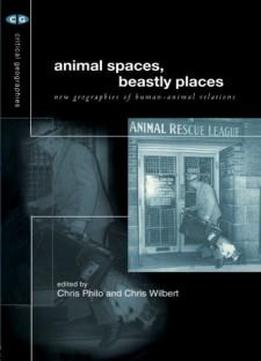
Animal Spaces, Beastly Places (critical Geographies)
by Chris Philo /
2000 / English / PDF
8.9 MB Download
Animal Spaces, Beastly Places examines how animals interact and
relate with people in different ways. Using a comprehensive range
of examples, which include feral cats and wild wolves, to domestic
animals and intensively farmed cattle, the contributors explore the
complex relations in which humans and non-human animals are mixed
together. Our emotions involving animals range from those of love
and compassion to untold cruelty, force, violence and power. As
humans we have placed different animals into different categories,
according to some notion of species, usefulness, domesticity or
wildness. As a result of these varying and often contested
orderings, animals are assigned to particular places and spaces.
Animal Spaces, Beastly Places shows us that there are many
exceptions and variations on the spatiality of human-animal spatial
orderings, within and across cultures, and over time. It develops
new ways of thinking about human animal interactions and encourages
us to find better ways for humans and animals to live together.
Animal Spaces, Beastly Places examines how animals interact and
relate with people in different ways. Using a comprehensive range
of examples, which include feral cats and wild wolves, to domestic
animals and intensively farmed cattle, the contributors explore the
complex relations in which humans and non-human animals are mixed
together. Our emotions involving animals range from those of love
and compassion to untold cruelty, force, violence and power. As
humans we have placed different animals into different categories,
according to some notion of species, usefulness, domesticity or
wildness. As a result of these varying and often contested
orderings, animals are assigned to particular places and spaces.
Animal Spaces, Beastly Places shows us that there are many
exceptions and variations on the spatiality of human-animal spatial
orderings, within and across cultures, and over time. It develops
new ways of thinking about human animal interactions and encourages
us to find better ways for humans and animals to live together.











